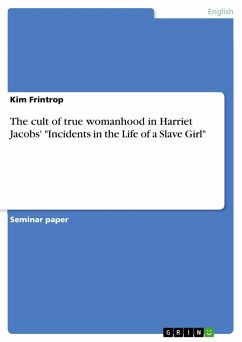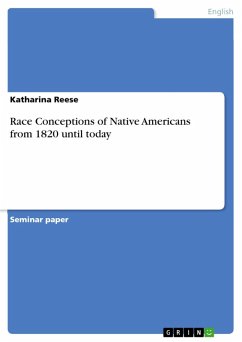Seminar paper from the year 2004 in the subject American Studies - Culture and Applied Geography, grade: 1,3, Ruhr-University of Bochum (Englisches Seminar), course: Playing in the Dark, language: English, abstract: In this research paper I deal with the representation of the African Americans in Spielberg's film Amistad, that has bee issued in 1997. I chose this film because it deals with a very important case in American and African American history. The verdict of the Supreme Court had a great impact on the abolitionist movement and therefore on American history. Although the trial was not on the issue of slavery but of cargo, in the head of the people it soon became the issue of slavery, slaves and abolition of slavery. The Amistad case did not only become known in the near vicinity of the New Haven jail where the Africans were being held in prison. The news of the captured Amistad Africans spread like fire and U.S. newspapers same as international newspapers featured them on the title pages. In the following chapters I will go deeper into the general representation of the Africans in the film, the preparations to the film Amistad, and the differences between the film and actual history. Doing that, I will also compare the representation of the slaves, respectively the Africans, in Amistad to the representation of the slaves in Birth of a Nation. I will add this issue in different chapters when I think it is appropriate, and in one chapter I will specifically deal with the main differences. Natalie Davis calls Amistad a 'feature film' because those kind of films are often described as inventory and with no connection to the experiences that have been real and to the historical past (5). In how far this really applies to Amistad and how the Africans/African Americans are represented in the film I will explore in this research paper. In order to answer these questions I studied the film and secondary material on the film and the general issue of Slaves on Screen, which also is the title of Natalie Zemon Davis' book about different films that deal with this subject. For information about the Amistad Africans I consulted Howard Jones' book Mutiny on the Amistad, that describes the historical events in detail. Apart from that, Black City Cinema by Paula J. Massood and the internet research project Exploring Amistad of the Mystic Seaport Museum were very helpful.
Dieser Download kann aus rechtlichen Gründen nur mit Rechnungsadresse in A, B, BG, CY, CZ, D, DK, EW, E, FIN, F, GR, HR, H, IRL, I, LT, L, LR, M, NL, PL, P, R, S, SLO, SK ausgeliefert werden.









